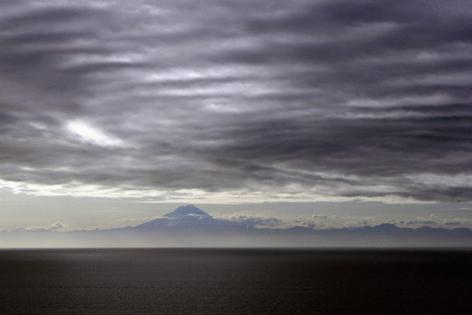Earthquakes are rumbling under Alaska volcano, officials say. Is it about to erupt?
Published in Science & Technology News
A volcano near Alaska’s most populous city is showing signs it could be headed toward an eruption, officials said.
Mount Spurr, which sits about 75 miles west of Anchorage, has seen “volcanic unrest” for the last 10 months, including an increasing number of earthquakes, according to a Feb. 6 statement from the Alaska Volcano Observatory.
The unrest suggests “that an eruption is possible,” officials said.
Since April, the number of earthquakes under the volcano has increased from 30 a week on average to 125 a week, officials said. The observatory “has located over 2,700 earthquakes during the unrest episode thus far,” according to officials, who said the largest of them was a magnitude 2.9 quake on Jan. 2.
If it erupts
If an eruption does happen, it likely will be at the Crater Peak vent, which erupted in 1953 and 1992, the observatory said. Those eruptions “were brief, explosive, and produced columns of ash” rising up to 65,000 feet above sea level and falling down on South Central Alaska, officials said.
“Based on all available monitoring data,” the observatory views the chance of no eruption versus one similar to those in 1953 and 1992 as equal, officials said.
However, an eruption at the summit is less likely, according to officials, who said that hasn’t happened in more than 5,000 years.
As of Feb. 12, the observatory listed Mount Spurr’s alert level at advisory, which is a step above normal.
Officials said they’d “expect to see additional seismic activity, gas emissions, and surface heating, as well as changes to surface deformation prior to an eruption, if one were to occur. Such stronger unrest may provide days to a few weeks of additional warning, but that is not certain.”
Officials also noted that Mount Spurr saw increased activity in 2004 but didn’t erupt.
1992 eruption
The 1992 eruption cost Anchorage about $2 million in cleanup, damage and office closures, according to the National Oceanic and Atmospheric Administration’s National Centers for Environmental Information.
While no one was killed because of the eruption itself, two people had heart attacks from shoveling ash and one of them died, the agency said.
If Mount Spurr does erupt again, “primary hazards during future eruptions include far-traveled ash clouds, ashfall, pyroclastic flows, and lahars or mudflows that could inundate drainages all sides of the volcano, but primarily on the south and east flanks,” according to observatory officials.
Matt Haney, from the observatory, told Live Science that ash likely would have the biggest affect. No communities would be threatened by lahar or pyroclastic flows, he told the outlet.
_____
©2025 The Charlotte Observer. Visit charlotteobserver.com. Distributed by Tribune Content Agency, LLC.







Comments